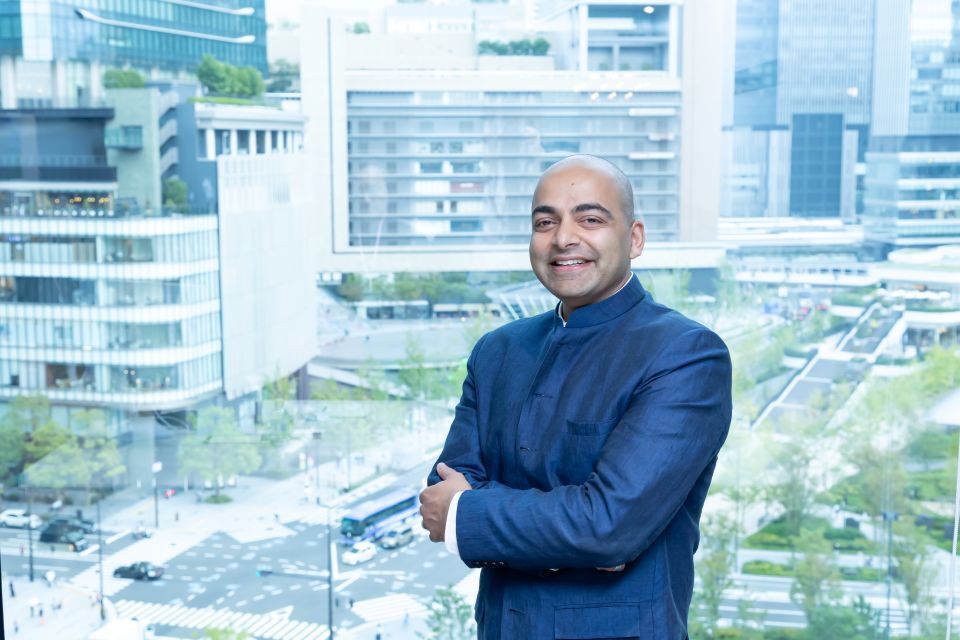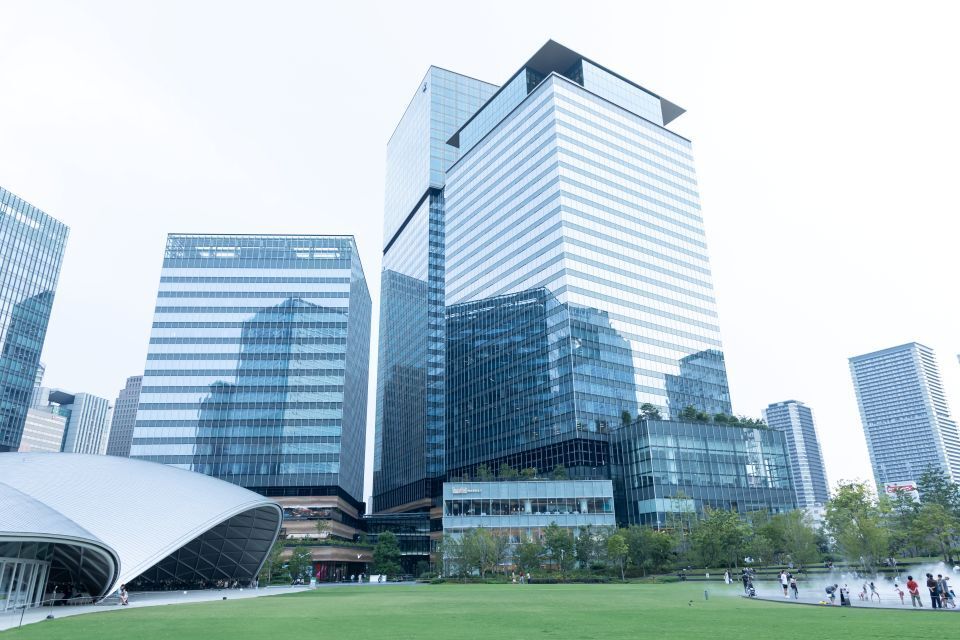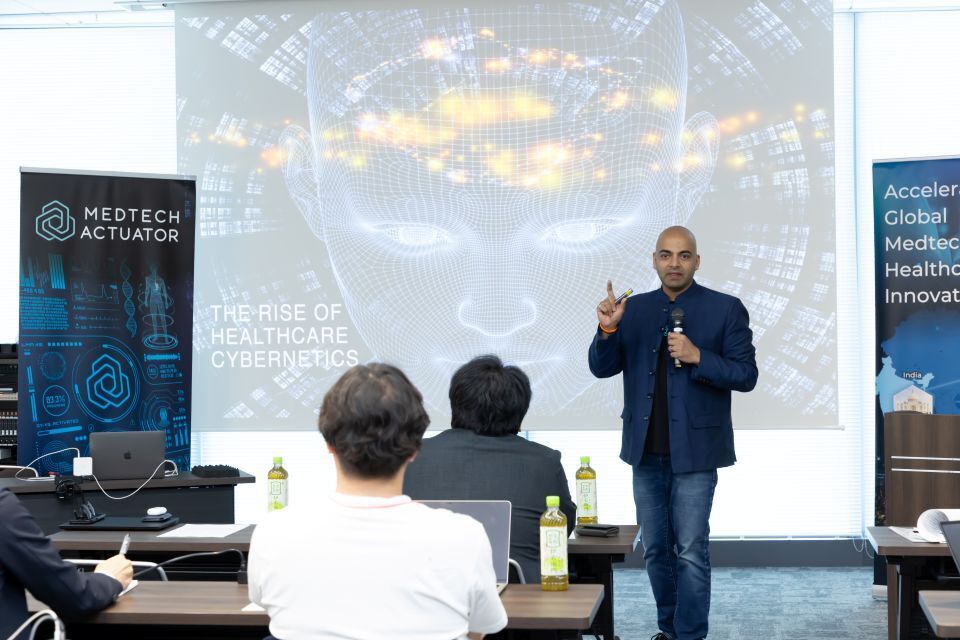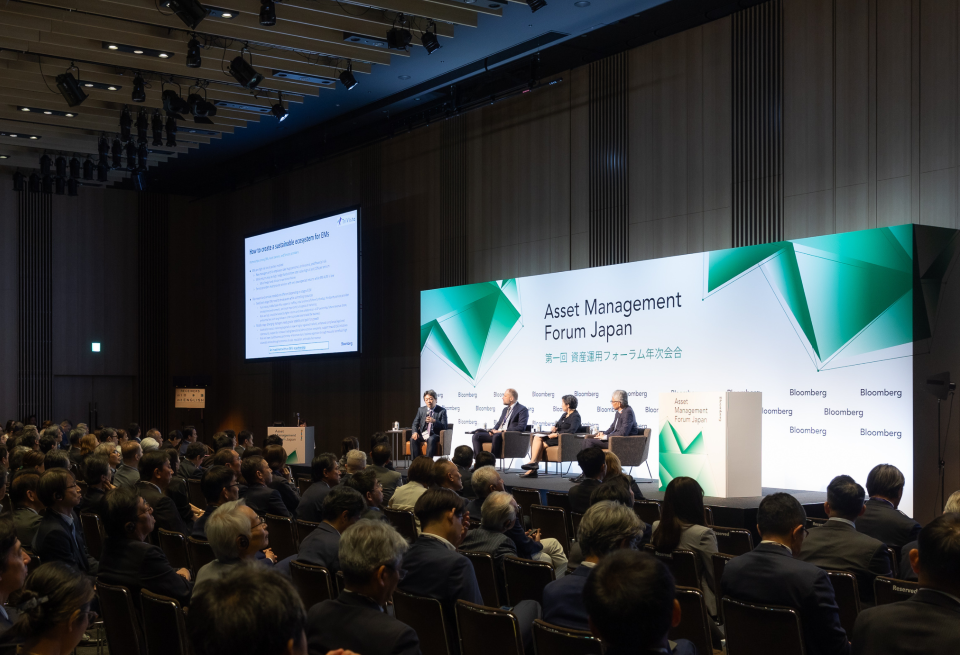Spurred by its designation as one of Japan’s Special Zones for Financial and Asset Management Businesses, the Osaka area has been working to attract domestic and international investment capital and foster regional development. Leveraging its strengths in the life sciences, Osaka aims to establish a new financial ecosystem by encouraging market entry from abroad and connecting with startup ventures in the region.

MedTech Actuator LLC (MTAC), an Australian company with strengths in the medical and life sciences sector, was attracted by Osaka’s business environment and established a base there. The photo shows Professor Vishaal Kishore, co-founder and Chief Strategy Officer (CSO) of MTAC.
Japan has gained increasing attention in recent years as a destination for overseas investment and new business enterprises. In 2024, the government assigned the following four areas as Special Zones for Financial and Asset Management Businesses: Hokkaido and Sapporo City, the Tokyo Metropolitan Area, Osaka Prefecture and Osaka City, and Fukuoka Prefecture and Fukuoka City, each with its own distinctive business ecosystem. The initiative aims to develop regional industries by creating attractive environments for business and drawing domestic and international investment funds to the designated areas. Here, we focus on the Osaka zone, which is implementing some unique initiatives in the medical startup field.
Expo 2025 Osaka, Kansai, Japan, held under the theme “Designing Future Society for Our Lives,” showcased diverse exhibitions by domestic and overseas deep-tech startups addressing global challenges. Viewing the Expo as more than a one-time event, the prefecture and city of Osaka are attempting to create an environment where innovative startups can thrive as a key component of the region’s Special Zone status. To achieve this vision, they are strengthening Osaka’s financial infrastructure through regulatory reforms aligned with global standards and efforts to attract investment from abroad. The goal is to encourage promising, investment-ready startups to establish operations in the region.
To attract overseas investment, Osaka and the entire Kansai region are leveraging their strengths in the life sciences, a field that aligns with one of the Expo’s key themes. The Kansai area hosts Japan’s largest cluster of leading life-science research facilities. This includes Osaka, home to the headquarters of major pharmaceutical companies and the cutting-edge Nakanoshima Qross “future medicine” industry hub. Kyoto is a center of world-renowned iPS cell research, while Kobe focuses on drug discovery applications using the Fugaku supercomputer, located at a research center in the city.

In the Osaka Station North District (known as Umekita), a 24-hectare development zone north of Osaka Station, a project is underway to form a new industry creation hub through industry-government-academia cooperation. MTAC has established an office in JAM BASE, an innovation support complex located in Umekita.
Attracted by this business environment, MedTech Actuator LLC (MTAC), a medical and healthcare accelerator (startup support organization) established in Australia, expanded to Osaka in 2024.
Professor Vishaal Kishore, chief strategy officer (CSO) and co-founder of the company, explains MTAC’s reason for choosing Osaka: “Osaka is a ‘Goldilocks zone.’ In the scientific world, this refers to a place that is optimal for organisms to inhabit, but in terms of creating medical innovation, it means an area that is not too big, not too small, just right. Osaka has excellent human resources and universities, innovative companies, and room for businesses to grow, while it is not too big for entities in the area to lose contact with each other. Furthermore, Osaka people are very friendly. In the medical world, to promote collaboration, this openness is an important quality.”
In September 2025, the company organized Global Pitch Showdown 2025 in Osaka. This is a “pitch competition” where startups can present their ideas before a panel of experts in the medical and healthcare field. The Osaka event features eight companies: six that won preliminary contests among startup entries from overseas, and two selected from Japan.
“Until now, Japanese startups have offered high potential but weren’t always as internationally focused as might be beneficial,” Kishore says. “However, I believe that truly excellent medical innovation is not, and should not be, limited to one country. Health innovation is a global game. Osaka should be a network hub connecting the world to Japan, and Japan to the world—all to advance medical innovation. This event is one of the stepping stones for that purpose.”
With MTAC’s programs enhancing the potential in the medical and healthcare field that the Kansai region already possesses, Osaka’s growth as a hub for medical innovation networks will likely accelerate.

A lecture on global strategy was held for Japanese companies participating in the Global Pitch Showdown 2025 Semi-Final in Osaka, with CSO Kishore serving as the instructor. KUWATA Yoshiyuki, CEO of Ayumo Inc., a medical startup spun off from Osaka University, says: “By participating in this pitch competition, where the judges come from around the globe, I hope to make connections with people who can deliver our company’s system to the world.”
To support the growth of such startup companies, financial regulatory reforms—applied to all of Japan, not just a single region—are advancing, while taking into account the needs of local governments in the Special Zones. Two significant reforms were implemented as of May 2025. One promotes the outsourcing of middle- and back-office operations in asset management businesses. Registering an investment management business in Japan previously required the hiring of dedicated compliance officers in-house. Asset management firms complained that this was a burden for companies with limited human resources and personnel budgets, and the government decided to relax the registration requirements for such businesses as long as investment management firms outsource those operations to investment management-related, service-entrusted business operators. As a result, they no longer necessarily have to hire dedicated compliance officers.
The other reform is the revitalization of secondary trading of unlisted stocks. Most stocks issued by startups are unlisted. To encourage trading them, further development was needed of secondary markets where these stocks could be traded widely. Entry requirements were therefore relaxed to make it easier to enter the intermediary business for trading unlisted stocks. Thanks to these two measures, many asset management companies are showing greater interest in Japan’s new market initiatives.
A series of events that highlight Japan’s dynamically changing investment environment is taking place in October and early November 2025. This is Japan Weeks, where many overseas asset managers and other financial professionals discuss various strengths and challenges in the asset management industry and the financial sector, particularly in Japan. One of the main events, the Japan Asset Management Forum 2025 Annual Meeting on October 21, features serious discussions between domestic and overseas asset management companies on the reforms needed to promote investment in Japan, including regions around the country.

The Japan Asset Management Forum’s annual meeting, held on October 21, 2025, is one of the core events of Japan Weeks. Shown here is the first meeting in 2024.
Today, national and local government policies and private financial institution initiatives are working in tandem to further regional economic development. Japan is about to enter a new phase where the public and private sectors, and global and domestic players, cross boundaries and openly cooperate to energize regions throughout Japan.






























